Help for Hen pecked chickens
If you are dealing with hen pecked chickens, finding help can be hard. These tips on help for hen pecked chickens that you can use to not only lessen the hen pecking but deter it from happening in the first place.
Raising chickens that are healthy and happy all starts with a flock that gets along. Use the tips that fit your situation to create a space for your chickens to thrive.
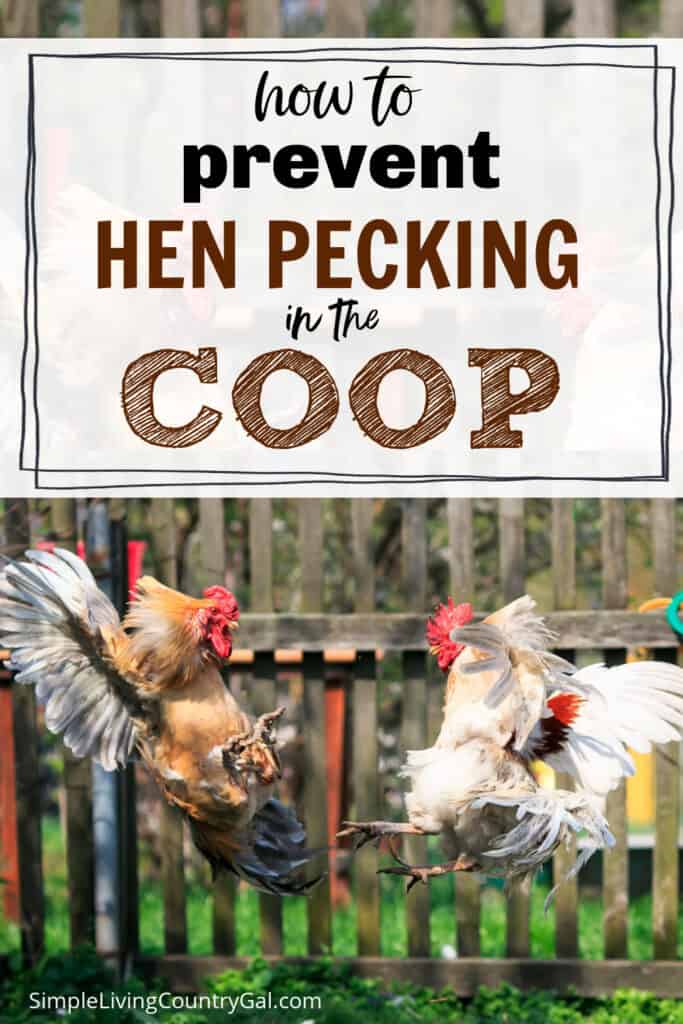
Hen pecked chickens can be a real problem for homesteaders. What starts out as a small issue can quickly escalate, causing issues within your flock that require your involvement. Some hen pecking never gets further than squawking and a few pecks, while other cases can include bleeding and even death.
Help for hen pecked chickens
Keeping your hens from pecking and injuring each other is very important for a healthy flock to ensure you get a continuous supply of farm-fresh eggs in your backyard. Stressed hens will not consistently lay eggs; if your chicken is being picked on, she is stressed.
What is hen pecking?
Hen pecking is when one or more chickens in your flock attack another weaker hen. Attacks are usually routine and not one-time occurrences. This is why intervening is so important.
What are the reasons for hen pecking in a flock?
There are many reasons why hens attack each other; let’s talk about a few of the most common.
Lack of Space
Chickens like to have room to move both inside and outside of the coop. To ensure there is enough space for your flock, aim to have 4 square feet of coop space per bird inside of your coop. For the run, it is good to have 8 square feet of run space per bird.
How much space do you need for your chickens?
- In the coop – 4 square feet of space per chicken
- In the run – 8 square feet of space per chicken
- On the roost – 10-12 inches of space per chicken
- Nesting boxes – 1 box for every 4 chickens
- Feeders – 1 feeder for every 6-8 chickens
- Waterers – 1 waterer for every 6-8 chickens
- Dust baths – 1 dust bath for every 5-6 chickens
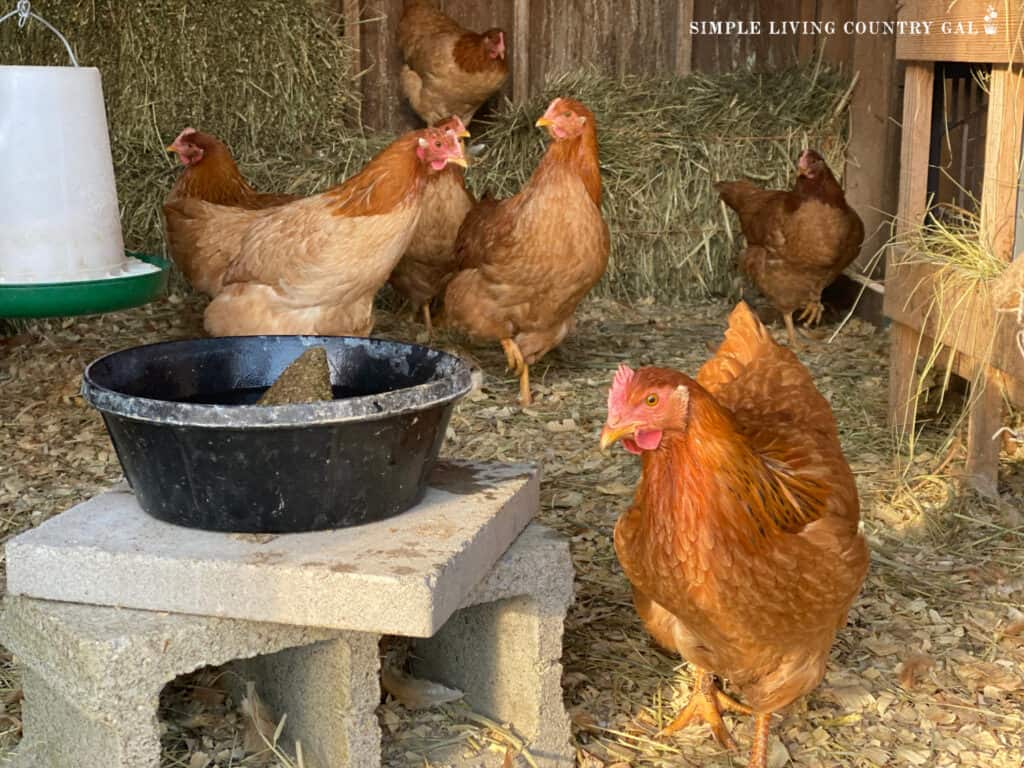
Overcrowding and lack of space can be common reasons why chickens start attacking each other. Give your chickens plenty of room to spread out.
Stress
Stress is another factor for hen pecking and can crop up in overcrowded housing as well as other factors. Know what can stress your flock so you can stop problems before they crop up.
Reasons chickens may become stressed:
- Overcrowding in the coop
- Overcrowding in the run
- Too hot or too cold
- Not enough roost space
- Too few nesting boxes
- Additions to the flock
Stressed-out chickens are quick to anger, and before you realize anything is up, the more dominant hens will take out their anger on other docile chickens. I will cover solutions for stressed situations later in this article.
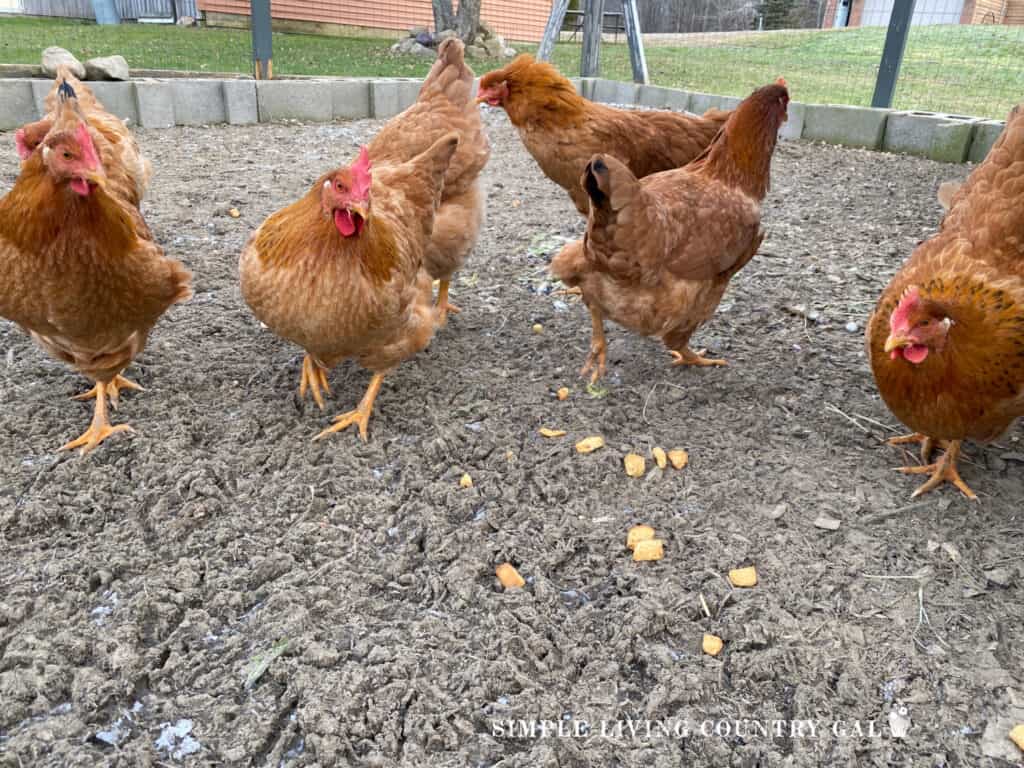
Illness
Chickens do not like to have weakness in their flock. When they sense that one in their flock is weak or unwell, they may bully and attack it. This is the main reason why chickens mask their illness or injury. They do not want to call attention that there is something wrong. This is helpful in the flock but not so helpful to us as owners.
That is why it is important to know your chickens so you can quickly see when something if off and treat them before things get out of hand.
More sick chicken help:
Molting
Molting is when chickens shed their old feathers and grow new ones. Molting begins at about 18 months of age and occurs annually. Molting usually takes place in the fall when the weather cools down, and chickens stop laying during this time. Molt can last anywhere from 8 – 16 weeks.
Unfortunately, molting season is a time when hen pecking ramps up.
When chickens get new feathers, they can look smaller than normal. This may hint to the other birds in the flock they’re more vulnerable, causing an attack.
More on Molting:
- Chicken Molting care and tips
- Chicken Feathers Falling Out
Poor Diet
Pecking at each other can sometimes happen if your chickens are not getting the nutrition they need. If their diet is poor, they may look for other options. Read How to Grow a Chicken Garden so you can have access to food that will support your entire flock’s health.
Dirty Birds
Though rare, a grimy and dirty chicken may look ill and a reason for the rest of the flock to push her out. To help, keep the outside run area dry to prevent mud and messy conditions. Incorporating a few dust baths can encourage your chickens to clean their feathers more routinely.
How to Stop Hen Pecking
Now that you have a few of the most common issues that can cause hen pecking in your flock, let’s talk about what you can do to prevent or stop it should a situation start.
1. Set Up a Safe and Adequate Coop and Run
You will want to ensure there is ample space for each member of your flock. Chickens need plenty of room both inside and outside of a coop which is bout 2 feet of room for each chicken in the coop and about 4 feet per chicken in the outside run.
If hen pecking starts giving your target a way to escape an aggressive hen can be helpful. Look to add a few distractions into the run that can break up large open spaces.
A common way that we use is to add branches to the run to create barriers and separate space. You can also hang a few chicken-safe toys in the coop or seed blocks to the run. Both of these options will keep the chickens entertained, avoiding boredom in the flock.
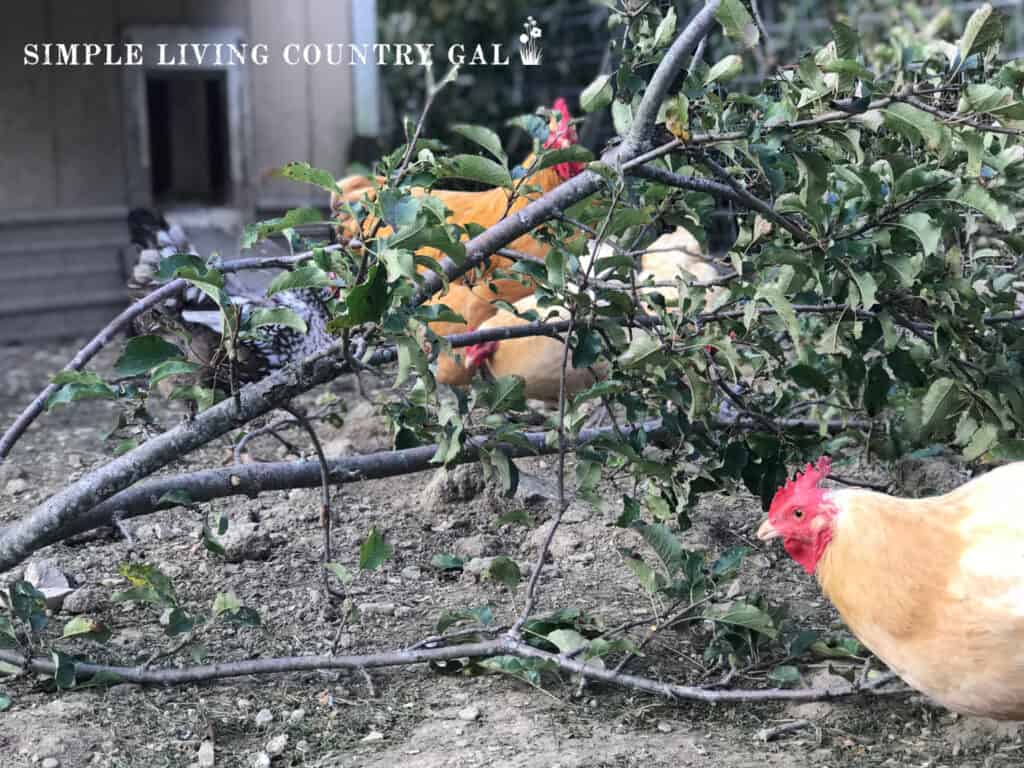
Have the right Roosts
Roosts are where chickens sleep at night. It is a secure area that is up off the ground and located inside the coop. You will want to make sure you have plenty of room, aiming for approximately ten inches of roosting space per chicken
If you have the room, create levels in the roost. The reason is that in most flocks, there is a hierarchy, and a multi-leveled roost will allow the more dominant hens to be on top and the less dominant lower down. Different levels on a roost also create more space for chickens, keeping them from feeling overcrowded.
Have Enough Nesting Boxes
Nesting boxes are containers found inside a coop where chickens lay their eggs. You will want to have one nesting box for every 4-5 chickens in your flock.
How to DIY Nesting Boxes for Your Coop
2. Feed a nutritional diet
Make sure you’re filling all of your chicken’s nutritional needs in their diet. If their diet is lacking, they’ll not only look for food sources elsewhere, but they’ll also produce eggs that are not as nutritional.
Use high-quality feed that meets the requirements of the area where you live. You can also offer scraps from your kitchen. Produce, both fruits and vegetables, and grains are all good options. Be sure that you are not giving moldy food to your chickens.
Treats for Chickens
- Cooked beans
- Leafy greens
- Corn
- Berries
- Apples
- Grains, oatmeal
Do not give garlic, onions, rhubarb, avocados, or raw potatoes to your flock as these foods can be toxic.
Adding more than one feeding area to the coop and the run is also a good idea. Spreading out the food will spread out the chickens and keep them from fighting over food.
3. Keep them clean
Chickens like to stay clean and will do a pretty good job cleaning themselves if you provide them with the necessary tools. Installing chicken baths will not only keep away the grime, but it will also reduce mites, lice, and parasites.
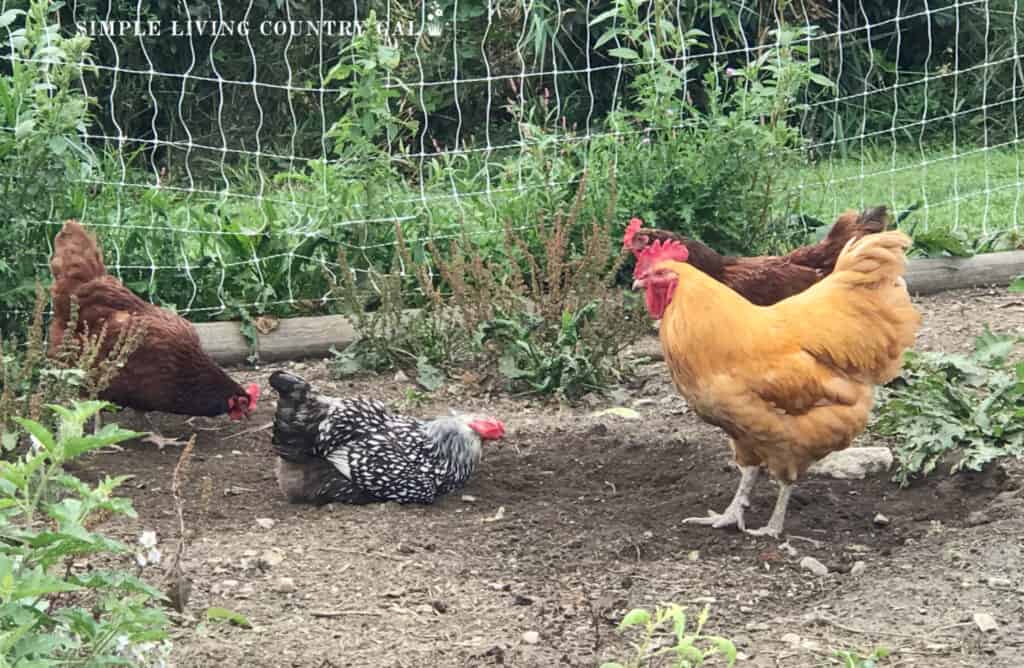
What is a chicken bath?
A chicken bath is also known as a dust bath. It is usually a hole or another container that is filled with a loose mixture chickens use to remove debris from their feathers and skin.
Chicken dust Bath Resources:
World’s Best Chicken Bath – Wood Ash, Sand, Dust – for All Chickens (2 Pounds)


Proper ventilation in the coop is also a necessity. Stale air can frustrate the birds, so ensure there is a cross breeze and ventilation out of the roof.
4. watch for injuries and illness
If you notice that one or two birds are being attacked, it’s possible that the reason is an illness or an injury. The other chickens can sense that they’re unwell and unable to defend themselves.
To prevent an issue from escalating, remove the bird from the flock giving her time to heal. Many times what is wrong is a simple fix. Cleaning a wound, giving nutritional support, or even calling a vet for advice as to what you should do to help.
Vetrx Poultry Aid, 2 fl.oz




If you do have a problem with hen pecking, be sure to remove any victims and perpetrators from the flock so things do not get out of hand. Even a little drawn blood can spark an outburst from the entire flock. If you have a chicken that is a chronic aggressor towards other hens you may need to remove her permanently to restore the calmness to the flock.
Some chickens are just born mean and the last thing you want is for the other members to learn this destructive behavior.
Help for Hen Pecked Chickens
Above, we listed out stressful areas that can lead to hen pecking in the flock; now, let’s talk about solutions that you can use to help.
- Overcrowding in the coop – The most economical approach is to sell a few of your hens to give the rest of the flock more space.
- Overcrowding in the run – You can use temporary chicken fencing to add a second run. We use this same fencing, and it works great, keeping the chickens in and predators out. You can also free-range your flock, giving them the run of your entire property.
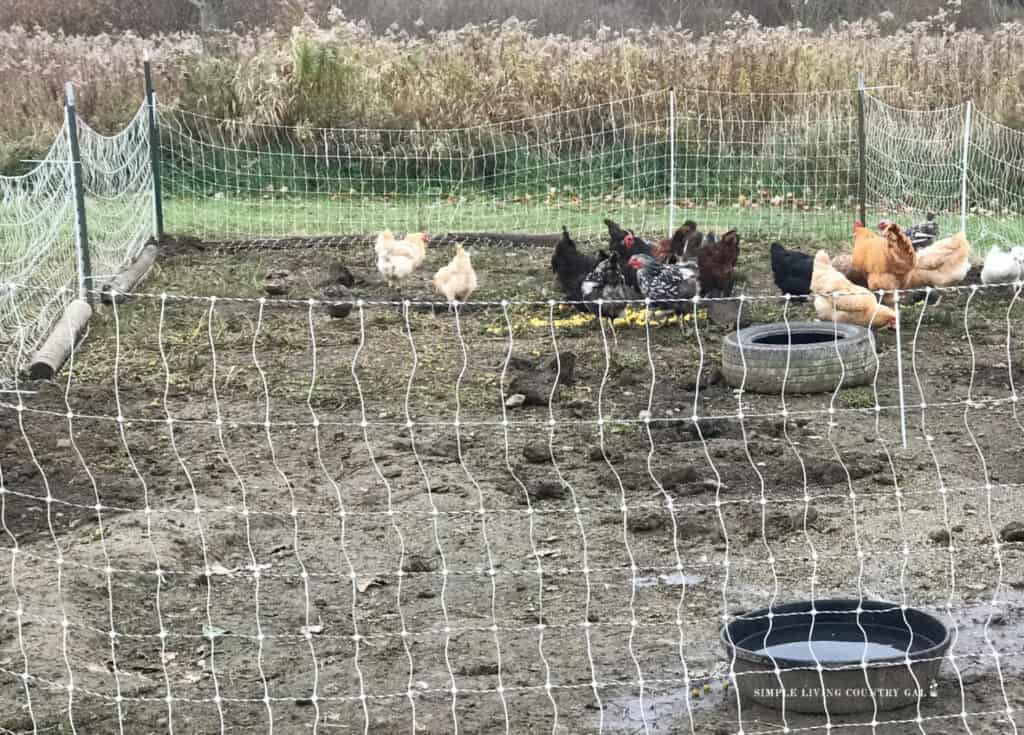
- Not enough roost space – Add a second roost to give more room for roosting. You can put a small step ladder in the coop as a temporary fix.
- Additions to the flock – When adding new chickens to an established flock, it is best to do so at night. Chickens have difficulty seeing at night, so you can simply place new chickens onto the roost. By morning the flock will not realize there are new chickens and go about their day as normal.
- Too hot or too cold – In the summer, have more than one water source both in and outside the coop. In the winter, take steps to ensure your coop is warm for the entire flock and the eggs they lay.
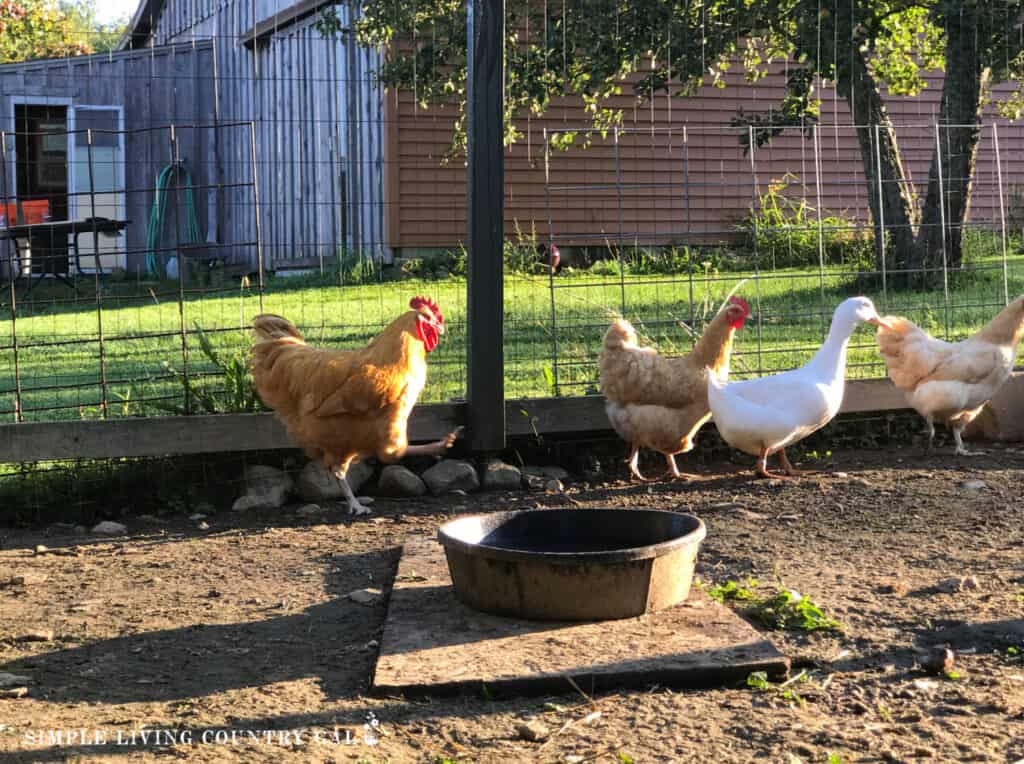
Hen pecked chickens can become a serious problem if not dealt with quickly. It’s important to keep a daily watch on your flock, their behaviors, their environment, and their nutrition so you can stop a problem before it becomes serious.










